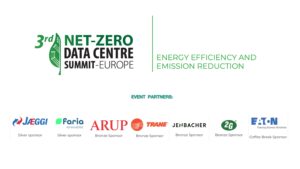Cities are facing layered demands. Cutting emissions, rethinking how space gets used, and upgrading worn-out infrastructure—cities are expected to do all three without upending daily life. Yet one of their most overlooked tools is surprisingly simple: rooftops. What used to be dead space is now being put to serious work. Specifically, through rooftop dual-use PV contracts, municipal teams are turning unused surfaces into systems that generate clean energy, manage rainwater, reduce heat, and also support local biodiversity.
Meanwhile, this article explores how rooftop dual-use PV contracts are reshaping urban energy procurement, guiding modern municipal rooftop solar planning, and supporting more strategic, outcome-focused distributed solar strategy efforts.
How Rooftop Dual-Use PV Contracts Are Shaping Urban Energy Procurement
Procurement isn’t just a back-office process anymore—it’s a strategic tool. Municipal procurement teams are now using their contracting power to demand more from rooftop infrastructure. Moreover, with land scarce and delivery expectations rising, contracts must deliver layered results. As a result, this section explores how rooftop contracts are evolving to meet new energy and infrastructure goals:
Rooftop Dual-Use PV Contracts as Performance Tools
Rooftops are becoming active contributors to urban function—not just energy hosts. Through rooftop dual-use PV contracts, planning teams are asking systems to go beyond energy: generate electricity, manage runoff, reduce surface heat, and even add shade. Furthermore, procurement officers are no longer accepting standard installations. They’re asking for metrics that show value per square meter. These contracts set clear expectations, enabling teams to evaluate not just equipment, but outcomes. Consequently, the result? Vendors are building systems that reflect real-world urban priorities, not just electrical efficiency.
Unlocking Capital by Targeting Multiple Benefits
Rooftop solar no longer draws from energy budgets alone—and that’s a good thing. By clearly defining co-benefits in procurement language, metropolitan regions can justify support from other departments: water, public health, climate, and even education. In turn, rooftop dual-use PV contracts transform solar from a siloed investment into a shared civic tool. Notably, this cross-functional appeal strengthens internal alignment and accelerates delivery. Likewise, it’s not just about funding more projects—it’s about making each project matter to more parts of the city.
Building Urban Energy Procurement Around Outcomes
Local governments are no longer comparing rooftop bids by price alone. Instead, they’re measuring proposals based on real-world outcomes—surface cooling, stormwater control, and shaded public areas. Procurement teams now evaluate long-term impact, not just technical specs. Because of this shift, top-tier vendors are presenting strategies that solve tangible problems, not just deliver power. This focus on outcomes also attracts stronger bids and leads to more reliable infrastructure. Over time, planning departments end up with systems that cost less to maintain and do more for the community. In effect, energy procurement becomes a tool for delivering measurable public benefit—not just checking boxes.
Rooftop Systems That Strengthen Distributed Solar Strategy
Any serious distributed solar strategy needs to solve more than grid decarbonization. In dense areas, rooftop systems must relieve stress on aging infrastructure and contribute to local resilience. Dual-use systems do just that. They’re built close to where demand exists—and they solve for multiple pain points in the process. Furthermore, procurement is catching up. Contracts now prioritize installations that serve broader planning goals: flood control, cooling, or even urban greening. Ultimately, this approach connects solar deployment to actual neighborhood needs, making it more valuable—and more defensible.
Strengthening Municipal Rooftop Solar Planning With Dual-Use Contracts
Rooftop planning has shifted from a technical task to a strategic lever. Urban leaders now embed rooftop systems into broader infrastructure goals—aligning them with public needs, co-benefit delivery, and long-term performance. Accordingly, this section explores how planning teams are scaling rooftop deployment while building the systems that support it:
Building Local Supply Chains Through Rooftop Demand
Sourcing teams now use rooftop contracts to strengthen nearby supply chains. Instead of relying on distant vendors or custom components, they prioritize partners who deliver locally sourced, building-ready systems. As dual-use portfolios grow, manufacturers, installers, and maintenance firms find reliable work close to deployment zones. This repeat demand reduces delivery delays, lowers transport emissions, and improves service responsiveness. In addition, it also turns procurement into a local economic strategy—one that grows skills, contracts, and resilience in the same regions those rooftops serve.
Using Templates to Scale Dual-Use Infrastructure in Cities
Consistency makes scale possible. Local governments are now using pre-approved templates for dual-use infrastructure in cities to fast-track procurement. These templates include technical specs, reporting formats, and co-benefit requirements—like biodiversity targets or roof reflectivity standards. Additionally, vendors save time, reviewers face fewer delays, and systems perform more predictably. As a bonus, the result is a faster rollout without sacrificing quality. More importantly, templates help normalize expectations across departments, making the dual-use tendering process easier to replicate citywide.
Adapting Buildings to Support Dual-Use Rooftops
Not every rooftop is ready for dual-use deployment. That’s why urban planners and building departments are coordinating early to ensure structural readiness. Some older facilities require reinforcements, access retrofits, or stormwater redesigns before installation. In new builds, engineers no longer treat rooftops as peripheral. They plan for roof load paths, embed sensor networks, and select surface treatments from the earliest stages. These choices do more than tick boxes. They set the building up for lasting value. By treating rooftop systems as essential from the start—not as pieces to add later—engineers avoid future retrofits. More importantly, the design fits naturally into broader infrastructure plans across the city.
Requiring Proof of Long-Term Performance
Installation is just the beginning. Municipal teams are also adding multi-year benchmarks to contracts: surface temperature audits, maintenance checks, and biodiversity monitoring. In municipal rooftop solar planning, performance tracking is no longer optional. Vendors must show how systems are working—and improving over time. Furthermore, some contracts link payments to impact benchmarks; others include penalties for failure. Either way, municipal departments now expect rooftop systems to evolve as infrastructure, not just sit as hardware. In effect, this mindset also raises the bar for both delivery and trust.
Scaling Dual-Use Infrastructure in Cities Into Energy Strategy
For rooftop solar to matter at scale, it needs to move from one-off success to repeatable strategy. Urban leaders are building frameworks to do exactly that—without losing local nuance. So, this section shows how procurement and planning are coming together to mainstream rooftop infrastructure:
Structuring Portfolios With Rooftop Dual-Use PV Contracts
Local teams are grouping assets—libraries, clinics, schools—into single rooftop dual-use PV contracts to streamline delivery. These portfolios share maintenance, delivery standards, and procurement templates. This bundling also helps less-visible rooftops—like social housing or admin offices—get the same upgrades as higher-profile sites. It additionally improves contract economics, enabling better vendor participation and more consistent system design. Crucially, the key is uniform structure, tailored for diverse sites. That’s what makes dual-use portfolios a tool for equity—not just efficiency.
Linking Contracts to Performance-Backed Finance
As rooftop portfolios grow, planners are designing contracts that meet the demands of serious institutional finance. Furthermore, green bonds, outcome-based loans, and ESG-linked facilities all require clear terms: measured co-benefits, enforceable reporting, and verified results. Rooftop dual-use PV contracts now include those elements by default. This enables urban administrations to link solar deployment directly to long-term capital plans and climate risk strategies. Therefore, finance teams don’t just approve the spend—they underwrite the delivery.
Embedding Local Context Into Distributed Solar Strategy
Each rooftop serves a different purpose. One site might need surface cooling, another might offer a chance to grow food, and a third could double as an educational tool. That’s why municipal energy teams are writing contracts that account for function—not just form. Vendors are now asked to tailor systems to their setting, whether that’s a school, clinic, or cultural center. This approach avoids cookie-cutter designs and delivers systems that match both physical needs and public expectations. When rooftop systems respond to physical context, they operate more effectively—and connect better with their immediate surroundings.
Making Procurement Part of Civic Engagement
Procurement decisions shape public infrastructure—but they often happen out of view. That’s starting to change. Modern urban energy procurement now includes engagement requirements: community input, education programs, and even rooftop access. In addition, some contracts ask vendors to document how they’ve included local voices. Others measure success partly by public feedback. These shifts don’t slow sourcing—they strengthen it. When people see themselves in infrastructure, they value it more. So, this trust makes rooftop projects easier to fund, build, and expand.
To Sum Up
Rooftop dual-use PV contracts are no longer a climate side project—they’re the mechanism urban planners are using to rethink space, infrastructure, and value. When designed well, they deliver far more than electricity. They provide resilience, public utility, and long-term infrastructure return.
Meanwhile, want to see how cities & companies are using these contracts to drive competitive advantage? This 10–11 September, Frankfurt hosts the 4th Net Zero Energy Sourcing & Power Purchase Agreements Summit 2025—bringing together the teams behind today’s most ambitious procurement strategies. Expect grounded discussions, real case studies, and insights shaped by practice, not theory. Register now!




